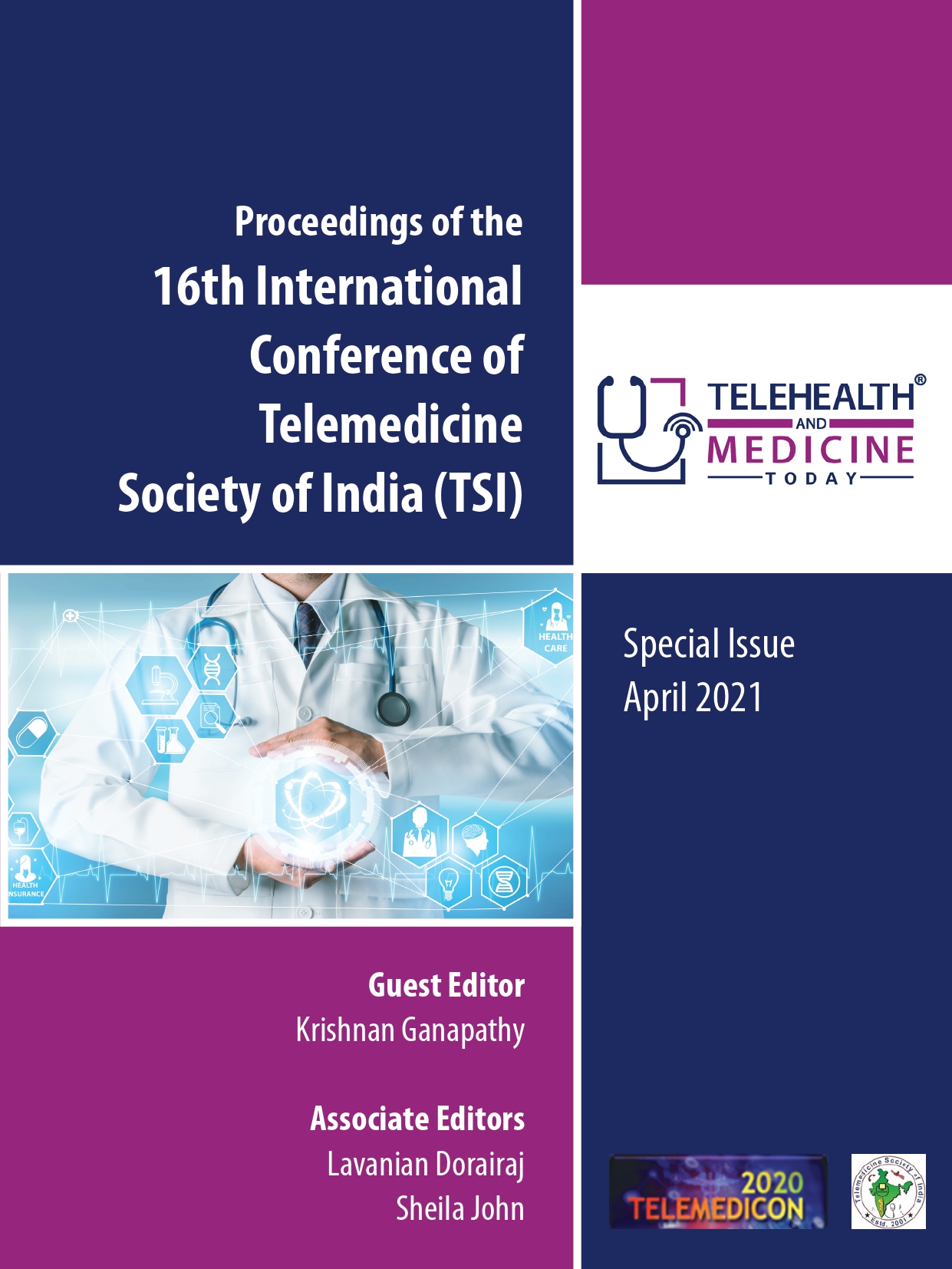The Mobile Teleophthalmology Unit in Rural and Underserved Areas of South India
DOI:
https://doi.org/10.30953/tmt.v6.257Keywords:
India; electronic medical records; ocular pathology; ophthalmic services; mobile eye care; teleconsultation; telehealth; telemedicine; teleophthalmology; video conferencingAbstract
Objective: Our objective was to provide an eye care service to rural and underserved areas in Chennai, Kanchipuram, and Thiruvallur districts of Tamil Nadu, South India.
Design: We conducted eye camps to provide ophthalmic services to the underserved and rural areas, where people cannot afford to go to a hospital due to lack of accessibility, lack of awareness, or financial constraints.
Setting: The study was conducted in rural and underserved areas of Thiruvallur, Chennai, and Kanchipuram districts from January 2015 to December 2019.
Participants: Patients (N = 1,05,827) underwent comprehensive eye examination in eye camps with the state-of-art ophthalmic equipment.
Main outcome measures: To report on the number of patients examined, number of eye disorders screened, and different types of ocular pathology screened, all clinical findings were recorded and all ocular images were uploaded in the electronic medical records. All patients with ocular diseases underwent teleconsultation with an ophthalmologist at the base hospital with internet connectivity. Video conferencing and teleconsultation were feasible only in areas with good internet connectivity.
Results: Over the 5-year study period, 1,05,827 patients underwent eye evaluation at 1,061 eye camps. Among these, 48,354 (45.7%) patients were males, 57,473 (54.3%) patients were females, 15,515 patients were emmetropes. The most common cause of avoidable blindness was uncorrected refractive error detected in 66,137 eyes, referable cataract was seen in 13,536 eyes, 2,491 eyes were identified to have retinal diseases, and there were 789 patients with only diabetic retinopathy, thus totaling to 3,280 comprising of all retinal disease. 2424 patients received teleconsultations. For further investigations and treatment, which were provided free of cost, patients were referred to the base hospital in Chennai. There were 6,309 patients who received free spectacles and an additional 31,192 patients received spectacles at a low cost; 13,536 patients had referable cataract and were referred to the base hospital for further evaluation and surgery.
Conclusions: Teleophthalmology holds great potential to overcome barriers, improve quality, access, and affordability to eye care, and has proven to be an innovative means of taking comprehensive eye care facilities to the doorsteps of rural India.
Downloads
References
Pascolini D, Mariotti SP. Global estimates of visual impairment: 2010. Br J Ophthalmol 2012; 96(5): 614–18. doi: 10.1136/bjophthalmol-2011-300539
Das T, Pappuru RR. Telemedicine in diabetic retinopathy: access to rural India. Indian J Ophthalmol 2016; 64(1): 84–6. doi: 10.4103/0301-4738.178151
Ayatollahi H, Nourani A, Khodaveisi T, Aghaei H, Mohammadpour M. Teleophthalmology in practice: lessons learned from a pilot project. Open Med Informat J 2017; 11: 20. doi: 10.2174/1874431101711010020
John S, Sengupta S, Reddy SJ, Prabhu P, Kirubanandan K, Badrinath SS. The Sankara Nethralaya mobile teleophthalmology model for comprehensive eye care delivery in rural India. Telemedicine e-Health 2012; 18(5): 382–7. doi: 10.1089/tmj.2011.0190
Prathiba V, Rema M. Teleophthalmology: a model for eye care delivery in rural and underserved areas of India. Int J Family Med 2011; 2011: 683267. doi: 10.1155/2011/683267
Ganapathy K, Ravindra A. Telemedicine in India: the apollo story. Telemedicine e-Health 2009; 15(6): 576–85. doi: 10.1089/tmj.2009.0066
Zimmer-Galler IE, Kimura AE, Gupta S. Diabetic retinopathy screening and the use of telemedicine. Curr Opin Ophthalmol 2015; 26(3): 167–72. doi: 10.1097/ICU.0000000000000142
Mansberger SL, Gleitsmann K, Gardiner S, Sheppler C, Demirel S, Wooten K, et al. Comparing the effectiveness of telemedicine and traditional surveillance in providing diabetic retinopathy screening examinations: a randomized controlled trial. Telemed J E Health 2013;19(2):942–8. doi: 10.1089/tmj.2012.0313
Maa AY, Patel S, Chasan JE, Delaune W, Lynch MG. Retrospective evaluation of a teleretinal screening program in detecting multiple nondiabetic eye diseases. Telemed e-Health 2017; 23(1): 41–8. doi: 10.1089/tmj.2016.0039
Qureshi B, Al-Rajhi A, Eckert K, Ravilla T, Khanna R, Mansur R, et al. Best practice eye care models. Indian J Ophthalmol 2012; 60(5): 351. doi: 10.4103/0301-4738.100526
Kovai V, Rao GN, Holden B. Key factors determining success of primary eye care through vision centres in rural India: patients’ perspectives. Indian J Ophthalmol 2007; 60(5): 487–91. doi: 10.4103/0301-4738.100558
Tan IJ, Dobson LP, Bartnik S, Muir J, Turner AW. Real-time teleophthalmology versus face-to-face consultation: a systematic review. J Telemed Telecare 2017; 23(7): 62. doi: 10.1177/1357633X16660640
Caffery LJ, Taylor M, Gole G, Smith AC. Models of care in tele-ophthalmology: a scoping review. J Telemed Telecare 2019; 25(2): 106–22. doi: 10.1177/1357633X17742182
Paul PG, Raman R, Rani PK, Deshmukh H, Sharma T. Patient satisfaction levels during teleophthalmology consultation in rural South India. Telemed J e Health 2006; 12(5): 571–8. doi: 10.1089/tmj.2006.12.571
Published
How to Cite
Issue
Section
License
Copyright (c) 2021 Sheila John, Lavanya Allimuthu, Ranjitha Kannan, Ramesh BabuSekar, Martin Manoj Mathiyazahan, Padmavathy Appasamy, Sangeetha Srinivasan

This work is licensed under a Creative Commons Attribution-NonCommercial 4.0 International License.
Authors retain copyright of their work, with first publication rights granted to Telehealth and Medicine Today (THMT).
THMT is published under a Creative Commons Attribution-NonCommercial 4.0 International License.

















